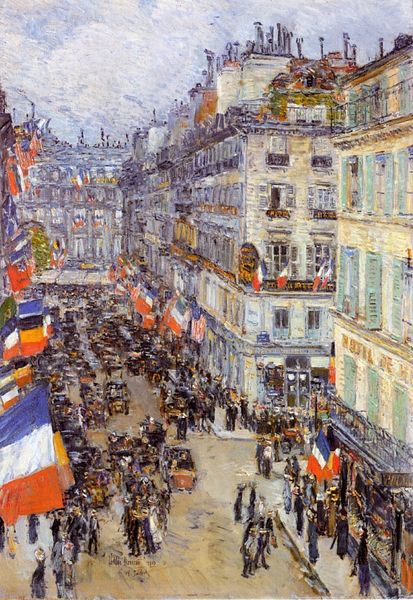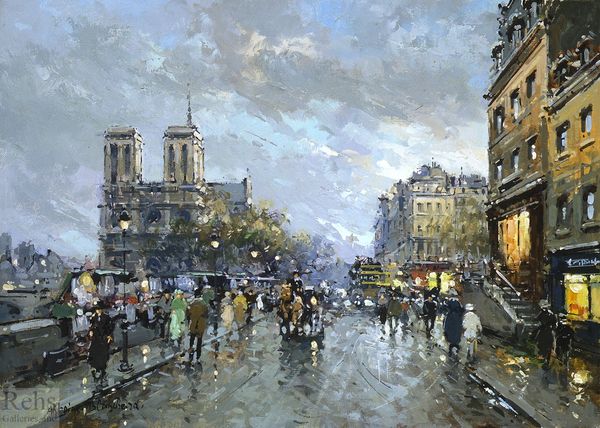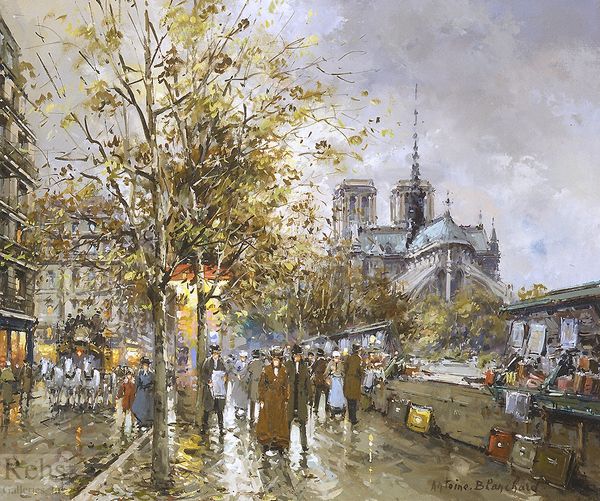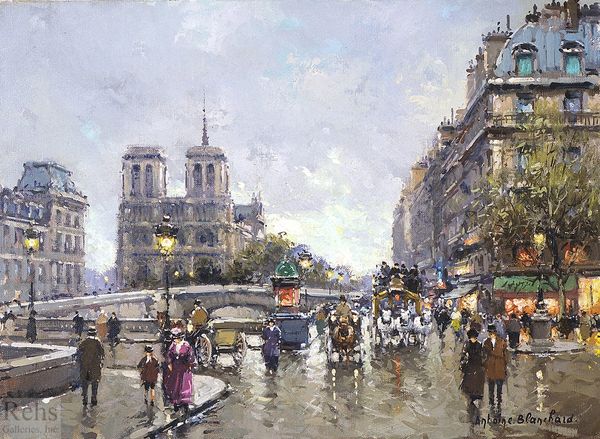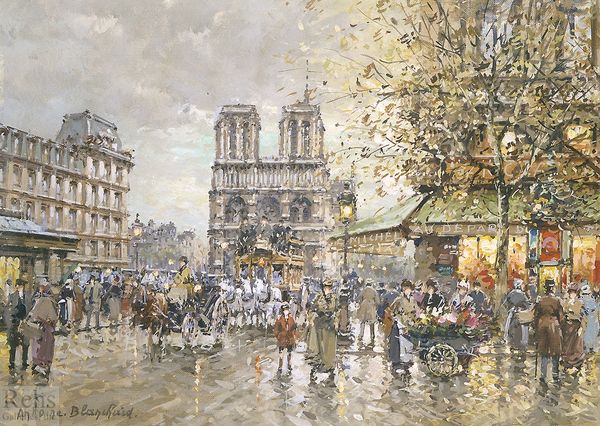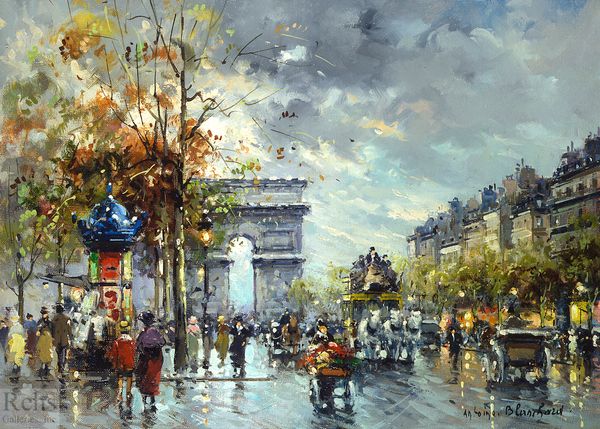
painting, oil-paint
#
painting
#
impressionism
#
oil-paint
#
landscape
#
oil painting
#
genre-painting
#
history-painting
#
academic-art
Copyright: Public Domain: Artvee
Editor: So, this is Jean Béraud's "La Marseillaise" from 1880. It's an oil painting and it really captures a sense of patriotic fervor, almost overwhelming with the sheer number of people and flags. How would you interpret this work? Curator: I see here not just a representation of patriotic feeling, but a document of labor and consumption. Consider the material production that made this scene possible. Look at the flags, their sheer volume speaks to industrial textile production and the availability of dyes. And think about the clothing, from the simplest worker's garb to the fancier attire of the bourgeoisie—all made possible through a complex web of labor, resources, and market forces. Do you notice how Béraud highlights the various social strata present? Editor: I do see that now. The painting doesn't just depict the event, but it almost showcases the *stuff* of the event, the very fabric of society participating in it. Does the materiality give any commentary on class? Curator: Precisely. The brushstrokes themselves are part of this materiality – oil paint, ground pigments, linen canvas, the artist’s labor in rendering this scene. Béraud doesn’t just represent, he manufactures an image steeped in the tangible realities of 19th-century Paris. Each figure contributes to the overall effect – an amalgamation of social classes unified, or perhaps homogenized, under the banner of national identity fueled by material consumption and production. And think about what went into moving this crowd – consider the manufacturing involved, what resources, what modes of transport would make this parade possible? Editor: That’s a very different lens than how I initially viewed it. I was stuck on the symbolism of the flags. Curator: The flags are crucial. What are flags other than manufactured textiles dyed to specific colors? Think about the social and material power concentrated in even the simplest banner, representing not only national unity, but also economic and social systems. It pushes us to reconsider seemingly celebratory or superficial occasions as opportunities for both consumption and expressions of social structures. Editor: So, by looking at the materiality, we get a deeper understanding of the painting's historical and social context. I will never look at a historical scene in the same way. Curator: Exactly! By examining art through a materialist lens, we acknowledge the intertwined nature of artistic creation and the socio-economic fabric that sustains it.
Comments
No comments
Be the first to comment and join the conversation on the ultimate creative platform.
